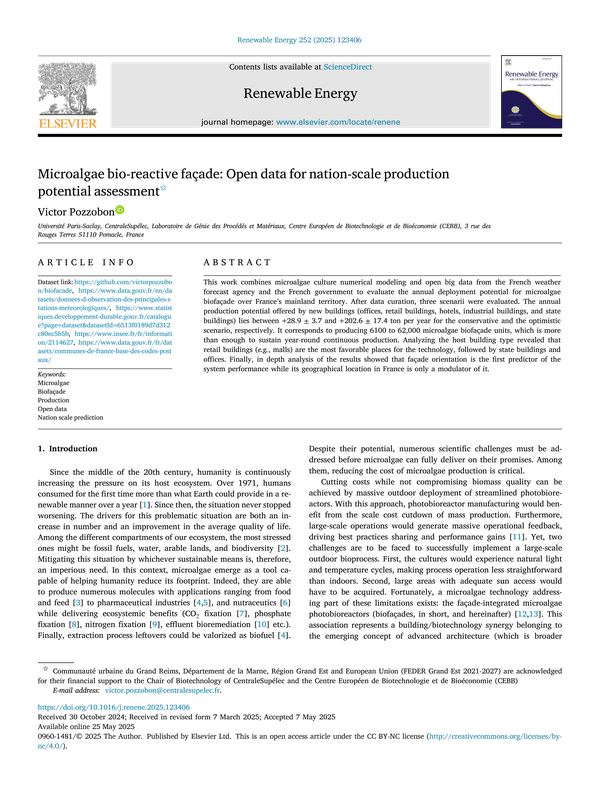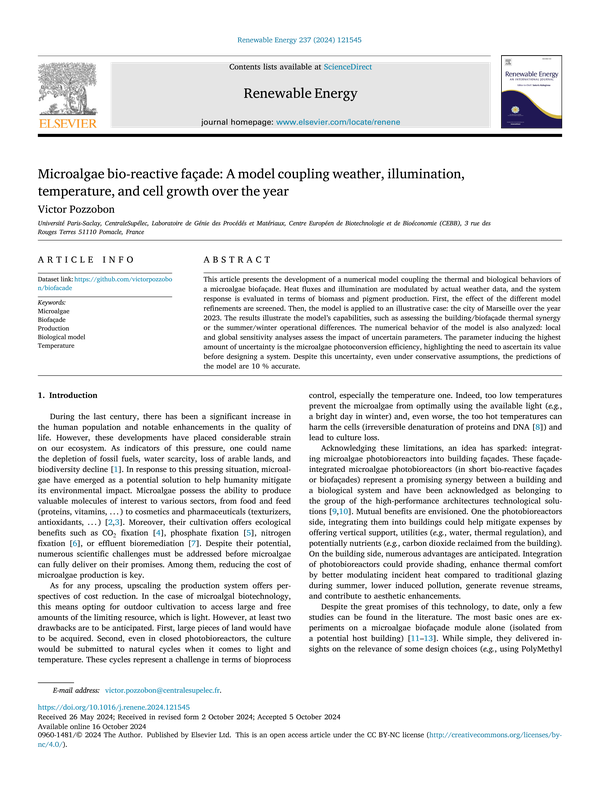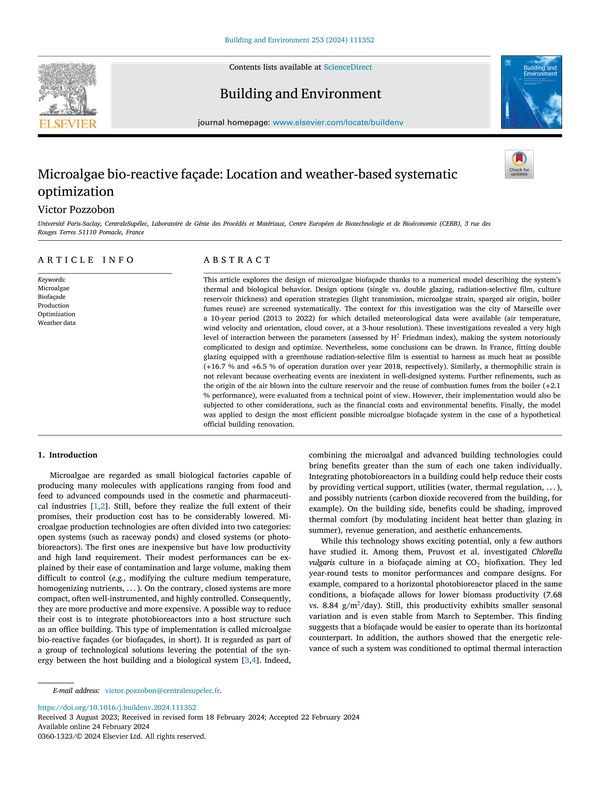Microalgae bio-reactive façade: Open data for nation-scale production potential assessment
Victor Pozzobonpublié le 27 mai 2025
73
0

République
Française
45
0

This article presents a numerical model predicting the performance of a microalgae biofaçade. The core of the model is the association of radiative, convective, and conductive heat transfers. These key physical phenomena are modulated by actual weather data and coupled to a biological model of the microalga Chlorella vulgaris. Based on the conjunction of temperature and illumination predictions, the biofaçade performances are categorized between low, adequate, high temperature
light-deficient, light-sufficient conditions. The capabilities of the model (dissection of acute events to year-round performance prediction) are illustrated using the city of Marseille, France, over the year 2020. The numerical behavior of the model itself is then analyzed. The influence of the Urban Heat Island submodel is discussed, and a global sensitivity analysis (Sobol’s indices) is led to assess the impact of uncertain physical parameters. The model accuracy is evaluated at 7.4% of the total daytime (under conservative assumptions) . The most influential parameters are the microalgae culture emissivity and the building indoor emissivity. All in all, the confidence in this model is high enough so that it can be used to design a biofaçade numerically.
Métadonnées :
50K
14K
19
16
Victor Pozzobonpublié le 27 mai 2025
73
0

Victor Pozzobonpublié le 27 mai 2025
49
0

Victor Pozzobonpublié le 27 mai 2025
78
0
